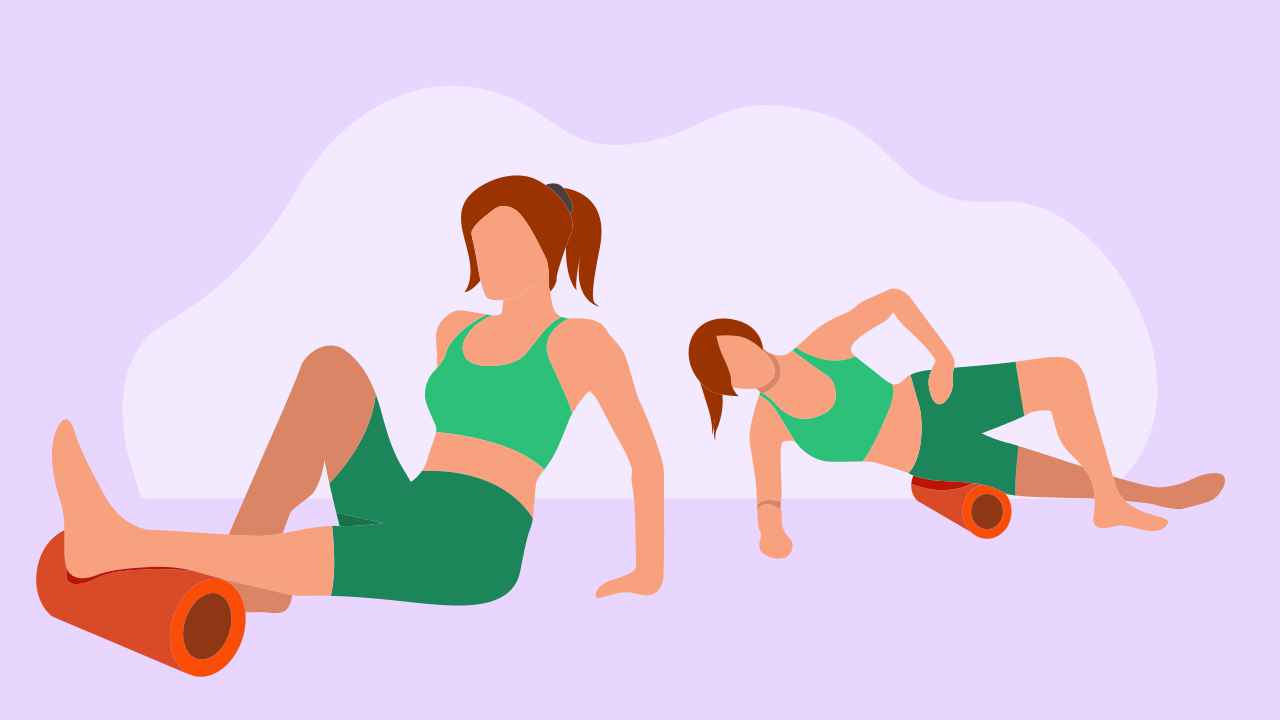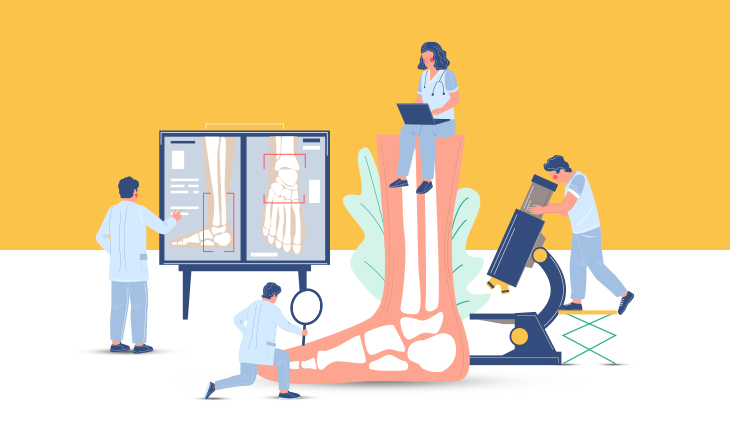
How Can Runners Use Foam Rollers for Recovery?

When an athlete trains, there is a physiological stress that the system is subjected to. It is only adequate rest and recovery that can allow the system to adapt to this stress. The primary method of recovery includes proper rest, hydration and nutrition. However, of late, research has thrown up other methods that can aid or enhance recovery:
- Cold water immersion
- Compression garments
- Massage
- Electrical stimulation
- Yoga
- Stretching
- Foam rolling
Also Read: How to Recover Well from a Race
The body is covered by a web-like connective tissue called fascia, which provides support, cushioning and flexibility for the entire framework. The result is that each part is connected to the other parts all over the body in this web. When a physical stressor is placed on this fascia by way of strength or endurance training, it begins to tighten as a protective response. This will in turn, cause tension to build up in the connective tissue, where the loads are chronic like the legs, in the case of runners. The result will be that such tension will limit the range of motion of the muscles and joints involved.
Foam rolling is a kind of self-myofascial release, a technique in which pressure is applied to tight fascia and underlying muscle, so as to release tension
Using a foam roller after exercise has shown to reduce soreness in the muscles and improve flexibility in the limbs. Releasing tightness in the muscles allows the body to relax, thus reducing muscle strain and improving muscle elasticity.
Foam rolling is done using a cylindrical roller made of a firm but cushioning material, on tight muscles. When pressure is applied to various tight spots or trigger points in the muscle fascia using a foam roller, it serves to:
- Reduce soreness
- Reduce inflammation
- Increase muscle elasticity
How do you buy a foam roller?
There are three parameters to review while selecting a foam roller.
Density: Foam rollers may either be soft, standard, or firm. Soft rollers are meant for people with sensitive skin and who want a gentle massage. Standard foam rollers are more moderate as compared to soft or firm. Firm rollers provide a deeply penetrating massage and are useful for athletes with very tight muscles.
Size and shape: Foam rollers come in a standard size with a diameter of 6 inches and a length of 36 inches. This serves to target all muscle groups while placing it on the floor. There is a shorter version, which is 6 inches and a length of either 12 inches or 18 inches for use when travelling.
Construction: Foam rollers made of EVA (Ethyl Vinyl Acetate) are professionally used by all athletes. They can be smooth or ridged. The ridged surface gives a more intense and invigorating massage for those who want it.
Foam rolling technique
When: Foam rolling is generally used after workouts, but it can also be used before a workout to aid a warm-up.
Duration: The duration of foam rolling is generally 1-2 minutes for each muscle group and the total length of time for each session should be around 10 minutes.
Frequency: It is generally prescribed 2-5 times per week, depending on the status of muscle tension.
Contraindications: Don’t foam roll areas that are excessively inflamed or sore.
1. Target muscle – Quadriceps
1. Start in a prone position (on your stomach) and place the roller at the top of your quad muscles
2. Place your palms and elbows on the floor and use them as an anchor. Begin slowly rolling your body forward until the roller reaches just near your knees
3. Now roll in the opposite direction until the roller reaches close to your hip flexors
4. When the roller rolls over a spot that feels tender, focus on it and roll back and forth 5-6 times
5. Foam roll for 30 seconds
2. Target muscle – Hip flexors
1. Start in a prone position (on your stomach) and place the roller at the top of your left hip flexor muscle
2. Keep your right leg bent, so that only your left hip flexor is in contact
3. Place your palms and elbows on the floor and use them as an anchor. Begin slowly rolling your body forward until the roller moves back and forth on your hip flexor
4. When the roller rolls over a spot that feels tender, focus on it and roll back and forth 5-6 times
5. Foam roll for 30 seconds
6. Now switch sides and repeat for the right hip flexor
3. Target muscle – Calves
1. Start in a seated position with your palms placed on either side of your hips for support
2. Place the roller under your left calf muscle
3. Cross your right leg over your left leg so that its weight adds pressure to the left calf
4. Now lift your butt off the ground with your palms beside you as an anchor
5. Roll forward and back to apply pressure from the roller on your left calf
6. Foam roll for 30 seconds
7. Switch sides and repeat for the right calf
4. Target muscle – Hamstrings
1. Start in a seated position with your palms placed on either side of your hips for support
2. Place the roller under your left hamstring
3. Place your right foot on the floor with the knee bent
4. Now lift your butt off the ground with your palms beside you and your right foot as an anchor
5. Roll forward and back to apply pressure from the roller on your left hamstring
6. Foam roll for 30 seconds
7. Switch sides and repeat for the right hamstring
5. Target muscle – IT Band
The IT band runs on the outer side of your thigh, from your hip to your knee.
1. Start in a right side plank position with your right elbow on the ground and the roller placed on your right IT band
2. Both your legs should be straight with your left leg stacked on your right leg and feet one above the other
3. Brace yourself with your elbow and palm that is placed on the floor and roll back and forth on the IT band
4. Foam roll for 30 seconds
5. Switch sides and repeat for the right IT band
6. Target muscle – Upper back
This stretch is essential for runners after a long run because the muscles tighten up due to holding an upright posture for long.
1. Start in a supine (on your back) position with knees bent, feet on the floor, and with the roller placed on your upper back
2. Cross your arms over your chest so that your back is rounded
3. Anchor your feet on the floor and use them to rock back and forth applying pressure on your upper back with the roller
4. Foam roll for 30 seconds
Reference
1. Healey KC, Hatfield DL, Blanpied P, et al. The effects of myofascial release with foam rolling on performance. J Strength Cond Res 2014; 28: 61-8.














